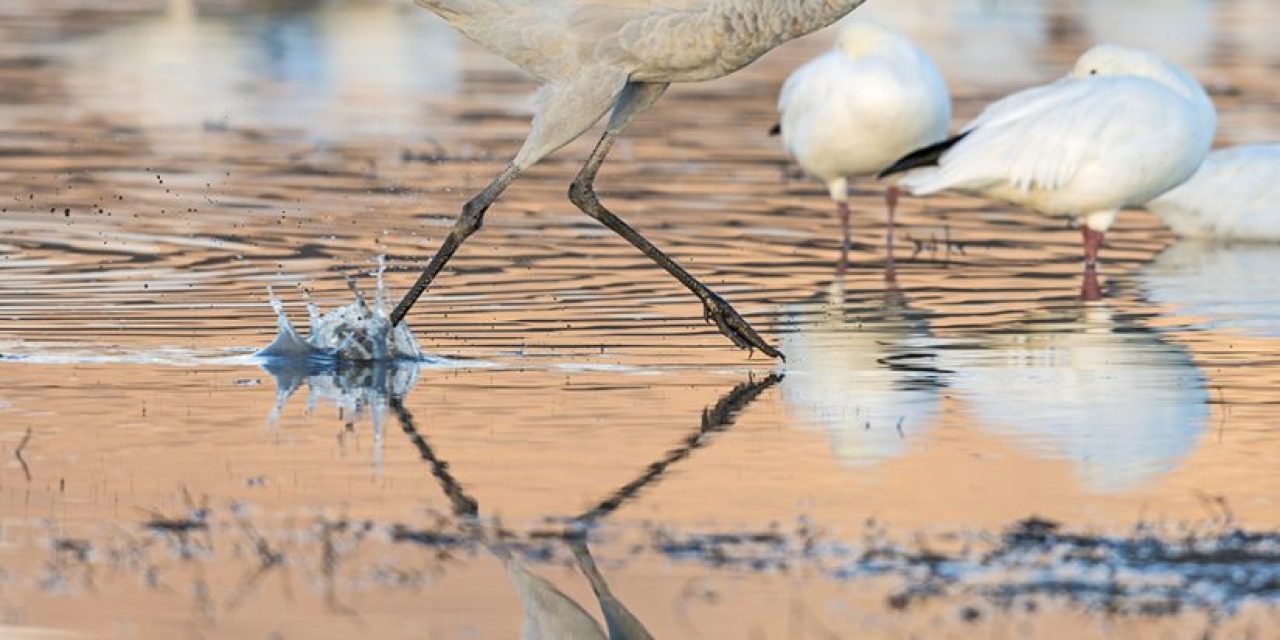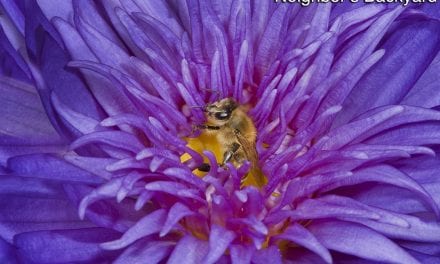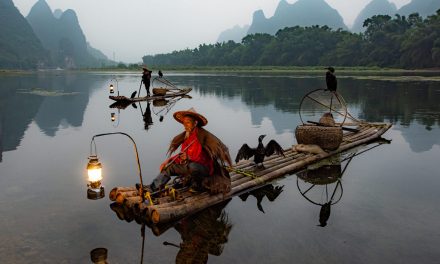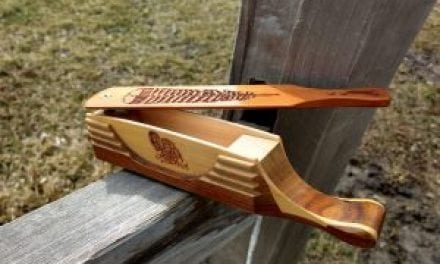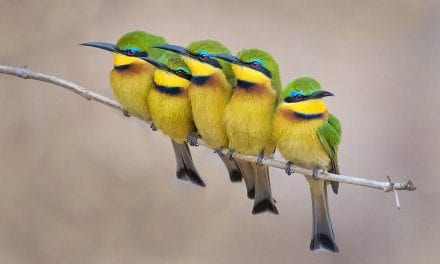Bosque del Apache National Wildlife Refuge, located about 90 minutes south of Albuquerque, New Mexico, is a dream location for bird photographers. The Rio Grande River cuts through this oasis in the desert, with the bulk of the photo locations in the 57,331-acre refuge located just minutes from U.S. Interstate 25. The river gives the refuge its lush landscape full of cottonwood trees and tall willows amidst an arid landscape sprawled between two mountain ranges.
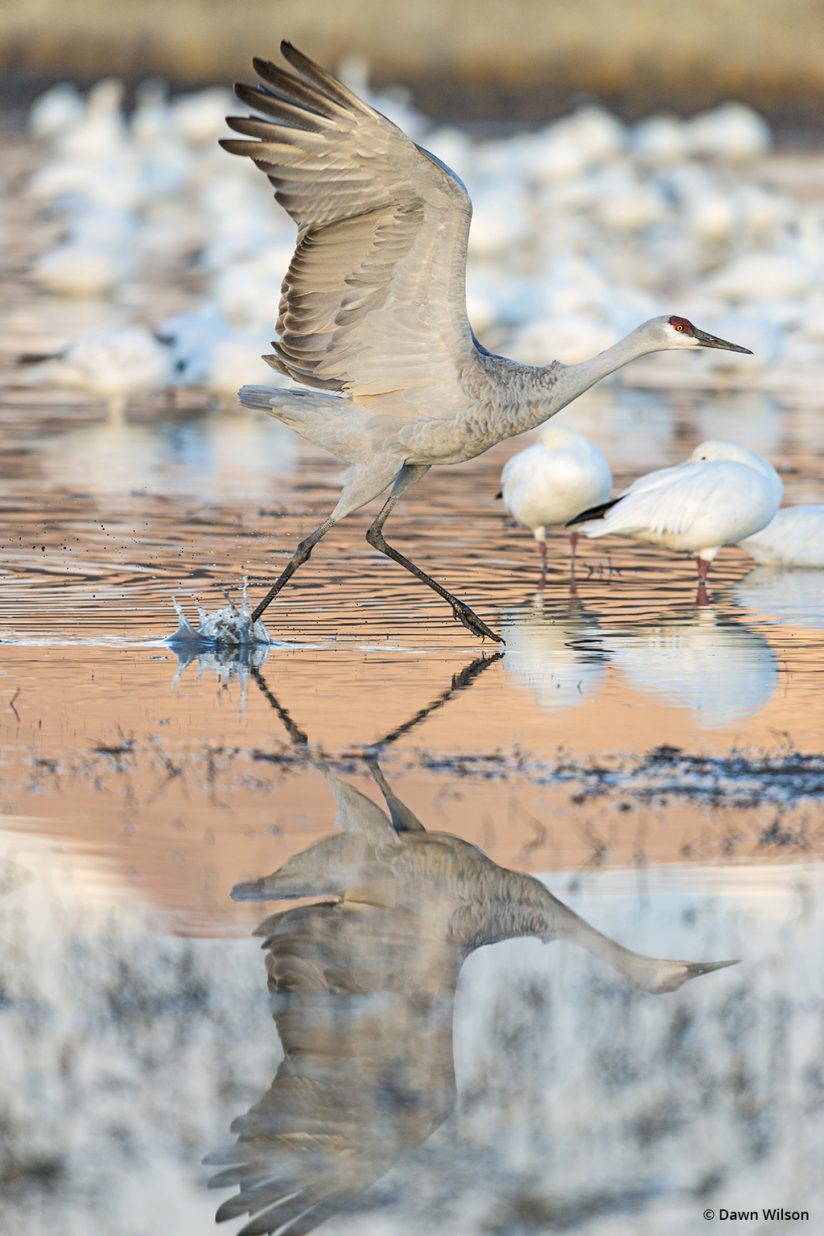
Bosque is best known for its opportunities to photograph thousands of sandhill cranes, snow and Ross’s geese, and a wide variety of ducks in the winter. These birds begin to arrive in October and will stay through February, roosting in the shallow ponds at night and venturing out to the cornfields to feed during the day. Photographers can also expect to see bald eagles, roadrunners, wild turkeys, northern harriers, javelinas, mule deer and coyotes, and a lucky few may see a bobcat or mountain lion.
Weather At Bosque del Apache
Winter is the season to visit Bosque to photograph the birds that winter here for the mild climate. Although snow does occur in winter in this southern location, it’s rare and short lived. Mornings typically hover around freezing, but daytime temperatures can easily reach into the 50s and 60s. Winter skies are frequently full of clouds that burst with color at sunrise but later burn off to reveal a sunny day.
Photographers who visit Bosque in November may experience some of the most dramatic weather. When temperatures dip quickly at night after the sun has warmed the water in the ponds during the day, rising mist will be seen in the ponds early the next morning, a wonderful element for dramatic photographs. The fall colors are still changing on the cottonwood trees in November as well. As fall moves into winter, light snow adds another effect to the birds grazing in the fields or roosting in the water.
By March and April, the large flocks have moved on, but new songbirds and Neotropical birds arrive, passing through on their spring migration. This time of year is also ideal for spotting migrating shorebirds taking advantage of the drawn-down ponds. Summer is hot and dry in this area, with temperatures averaging in the upper 90s in July.
Photo Experience
I have visited Bosque del Apache in the early winter just about every year since 2011. On each visit, I find something new to try; flying sandhill cranes are ideal subjects to test your panning skills or use slow shutter speeds during a takeoff of hundreds of snow geese for an abstract effect. And yet, I still have visions of photos I’d like to capture at this popular refuge. I have found that getting down low—as low as laying on the ground—to photograph the birds, such as the crane taking off in this shot, creates the best images of your subject. Birds are everywhere, so photograph big flocks and then wait for a bird to be isolated against its background. Remember to shoot birds in their environment because this landscape cries out for such a shot with the mountains and beautiful skies.
Best Times
Late fall and early winter are the best times to visit Bosque del Apache National Wildlife Refuge. The weather is extremely pleasant, and photo opportunities are at their greatest. There are several RV parks nearby for the intrepid traveler, and Socorro, 25 minutes to the north, provides a variety of hotel and restaurant options. For the photographer looking for learning opportunities at Bosque, consider attending The Festival of the Cranes, held each year on the Tuesday through Sunday before Thanksgiving.
Contact: U.S. Fish and Wildlife Service, fws.gov/refuge/bosque_del_apache.
See more of Dawn Wilson’s work at DawnWilsonPhotography.com.
The post Bosque del Apache National Wildlife Refuge appeared first on Outdoor Photographer.

